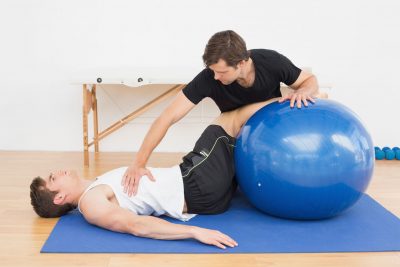What’s wrong with my low-back?
This is typically the first question people ask when they come in with back pain but the better question is probably, is there something wrong with my back?
Now I know that intense pain can be overwhelming and the idea that more pain must mean more damage can seem fairly compelling but we know that the degree of tissue damage does not dictate the amount of pain an individual experiences…
In actual fact we can have life threatening conditions with no pain at all – think cancer that spreads before we even know it’s there or silent heart attacks and we can have really minor injury with intense pain -think stubbing your toe or paper cuts!
You see, not all pain means tissue damage or disease and the majority of back injuries are minor but our very first job at MOH will be to establish whether you have anything serious to worry about; and once that is done, what is the best way forward for you?
So how do we work out what’s going on with your low back pain?
We start with a regular, stock standard health and injury history and an orthopedic & neurological assessment that generally involves pushing and pulling on a range of anatomical structures like muscles, tendons and ligaments. This is to help us work out what sort of pain you most likely have (there are different types of pain and they need to be managed differently) and to see if we can isolate where the pain might be coming from… but that doesn’t tell us much about why this might be happening or how we’re best to try and change it.
To work these things out we’ll combine what we know from your history and conventional musculoskeletal exam with a functional assessment of how you load the low back in various everyday movement patterns like squats, forward bends and planks.



This video is a snippet of some of the movements and things we might look at when assessing your low back pain so you have an idea of what we’re looking at when we examine you.
Why your examination matters as much as your treatment
This style of clinical assessment is flexible and it allows us to see how you actually move and use your body in an everyday scenario. Most importantly though, it allows us to play with your movement and loading strategies. This helps to give us some idea of why your low back might be problematic but most importantly it helps identify options for increasing your functional capacity and decreasing your back pain.
This assessment is a critical point of difference because while many therapists take a pain dependent approach (meaning they enforce rest and wait for your pain to resolve) we know that all the scientific evidence suggests we need to tackle things the other way around. That is, we need to increase your functional capacity to decrease your pain.
If low back pain is holding you back, make an appointment to have it assessed with us today. We can help you develop strategies for improving back pain and function regardless of whether it’s a new or chronic problem.
Want to know more?
You can learn more about the MOH approach to low back pain and improving back function by checking out blogs in the MOH Low Back series;
- Osteopathic treatment for low back pain
- Functional exercises for Low Back Pain
- Pilates for Low Back strength & stability
- Dead lifting for Lumbopelvic strength & control
- Myotherapy for low back pain
For more information, ideas and exercises check out our Health Tips blog.
